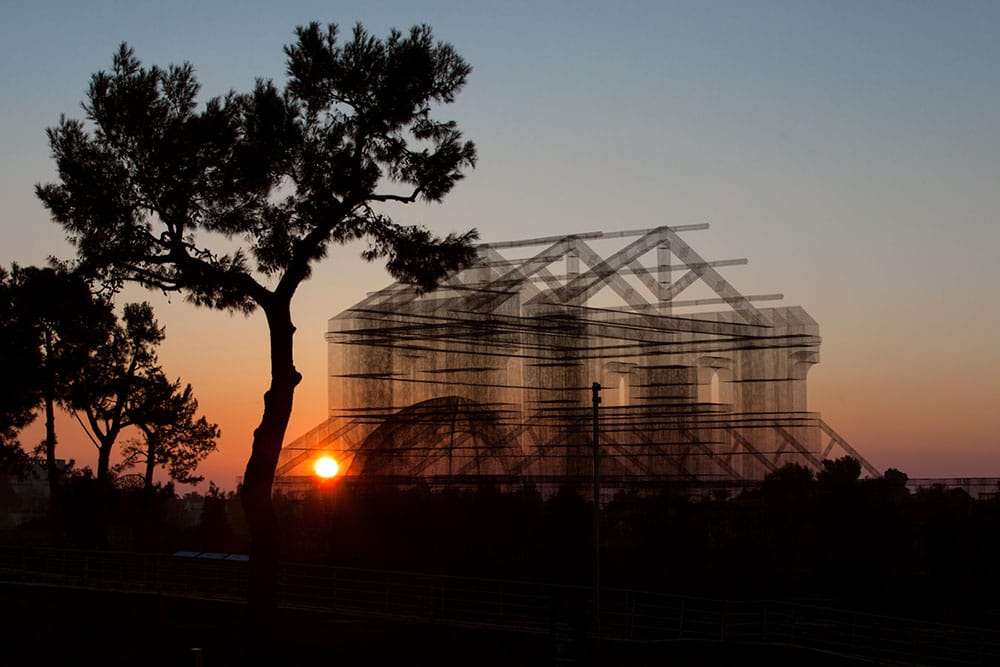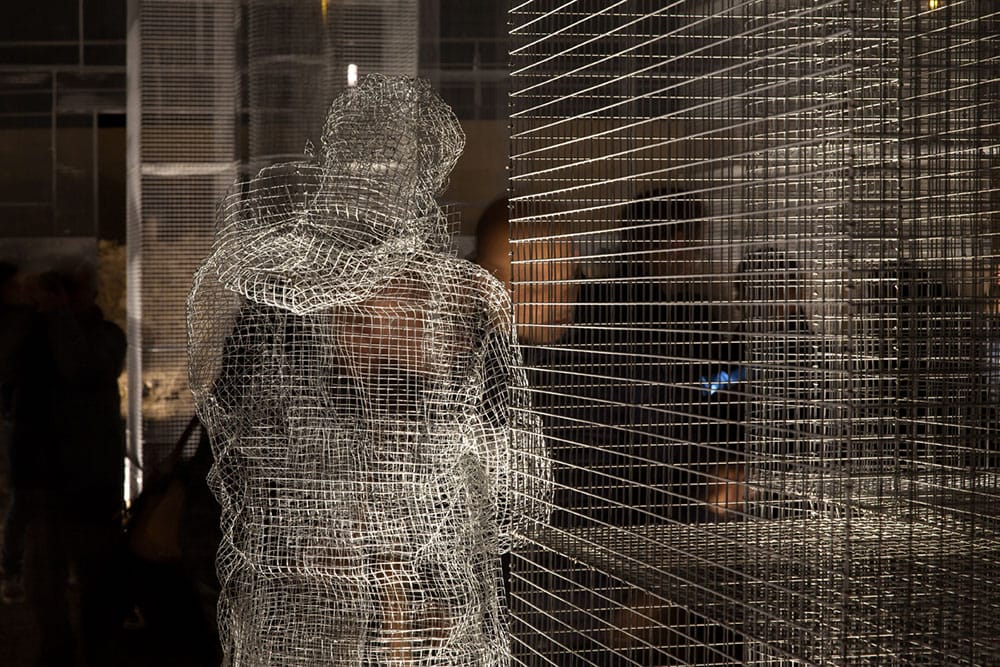Wireframe church looks like a videogame’s debug mode made real

Ruins force the present to live right next to the distant past. In Rome, traffic passes by the Colosseum, which has mostly survived and been restored, but sites such as the Circus Maximus are obvious because of their absence. There are no cafes or shops on this enormous oval, and it’s surrounded on all sides by a uniform and evenly-sloped hill that suggests human labor, but the open park is all that’s left to suggest there was something there.
One imagines the spaces that used to be present—stadium seating, booths for the wealthy—stretching up beside and above them. In ruins, it is difficult not to think of the past as a ghost both present and not—we’re standing on the same ground, there were people here, a wall there.
In the Archaeological Park of Siponto in Puglia, Italy, Edoardo Tresoldi has carried out a project that makes the past a little more palpable. With help from the Ministry of Cultural Heritage, he has reconstructed out of wire mesh an early Christian church in the site where it once stood.

The result is a structure with impressive detail—the cornices, columns, and archways are delicately preserved. The architectural forms match those of the distant past, but the building material is wire instead of heavy stone, and the church seems to float, to barely be there. Additionally, the ceiling features exposed wire-frame beams, as if to suggest a greater unfinishedness—the wire structure is a stark and ethereal representation of a part of the whole. It looks like something pulled out of the magical realism of Kentucky Route Zero (2013).
Tresoldi’s ghost church is representative or suggestive
As in the wireframe of a 3D model, you can look through part of the church to the rest of it. You can see all of it at once, like it’s been pressed—flattened into an image where nothing is hidden behind a wall or roof, almost like seeing it from several angles at once. But Tresoldi’s ghost church is representative or suggestive, whereas the wireframe in, say, a videogame is constructive and exhaustive. A model’s wireframe (typically seen in a debug mode) dictates the way a shape will be formed and it expects to be filled in with polygons and textures. But in Puglia, the space left by the ruins has been filled in by this structure, which looks back towards what was there. All that’s left of the Basilica is this suggestion, now made physical, but still only half present.
Tresoldi has worked in wire before. Some of his other pieces resemble similar structures, some represent the tension and weight in a human body, or a single moment in the flight of a bird. More of his work can be found here.
All images © Blind Eye Factory
h/t Colossal




